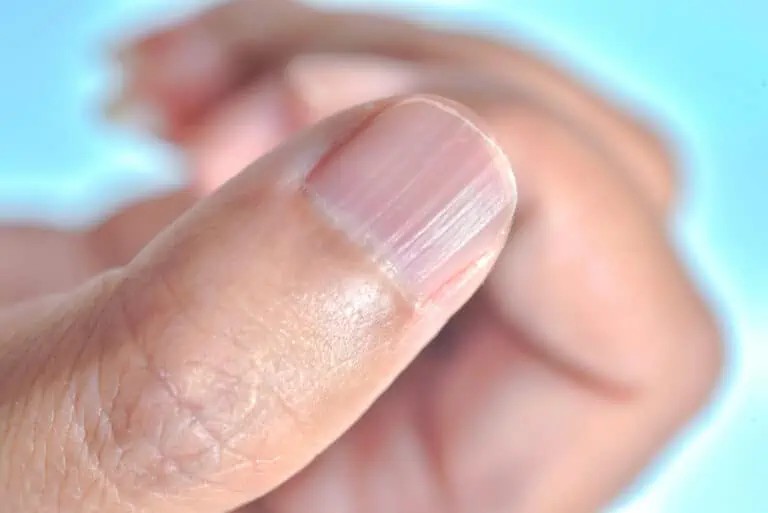Vertical or horizontal lines on your fingernails, also known as ridges, are a common occurrence. While often harmless, particularly with age, these lines can sometimes indicate underlying health issues. Understanding the different types of ridges and their potential causes can help you determine if a visit to a dermatologist is necessary.
Understanding Fingernail Ridges: Vertical vs. Horizontal
Fingernail ridges are categorized into two main types: vertical and horizontal. Each type has distinct characteristics and potential causes.
Vertical Fingernail Ridges: Causes and Concerns
Vertical ridges, running from the base to the tip of the nail, are often subtle and become more pronounced with age. This is due to natural thinning and brittleness of the nails. Other potential causes of vertical ridges include:
- Nutrient Deficiencies: Lack of essential vitamins and minerals, such as iron, folic acid (vitamin B9), and protein, can manifest as vertical ridges.
- Dehydration: Dry skin and dehydrated nails can lead to noticeable ridges.
- Skin Conditions: Inflammatory skin conditions like psoriasis and lichen planus can affect nail health.
- Underlying Medical Conditions: Hypothyroidism, rheumatoid arthritis, and rarer conditions like amyloidosis and Witkop syndrome can also cause vertical ridges.
- External Factors: Repeated trauma from manicures, harsh chemicals in nail products, and aggressive cuticle care can exacerbate vertical ridges.
 alt text: Close up of fingernails with obvious vertical ridges
alt text: Close up of fingernails with obvious vertical ridges
Horizontal Fingernail Ridges (Beau’s Lines): Causes and Concerns
Horizontal ridges, known as Beau’s lines, are deeper grooves or indentations that run across the nail. These lines often indicate a temporary disruption in nail growth. Potential causes include:
- Trauma: Injuries to the nail bed, such as hitting your finger or dropping a heavy object on your toe, can cause Beau’s lines.
- Artificial Nails: Prolonged use of artificial nails or gel manicures can damage the nail and lead to horizontal ridges.
- Skin Conditions: Eczema and psoriasis can affect nail growth and result in Beau’s lines.
- Nutrient Deficiencies: Zinc and protein deficiencies can contribute to the formation of horizontal ridges.
- Underlying Medical Conditions: Conditions impacting blood flow to the nails, such as peripheral vascular disease, diabetes, hypothyroidism, and Raynaud’s disease, can cause Beau’s lines. Chronic kidney disease, severe infections, and chemotherapy are also potential causes.
- Stress: Significant emotional stress or anxiety can disrupt nail growth.
Treating and Managing Fingernail Ridges
If you notice changes in your fingernails, consulting a dermatologist is recommended. While often benign, it’s crucial to rule out any underlying medical conditions. Treatment for fingernail ridges depends on the cause. Addressing nutritional deficiencies, managing underlying medical conditions, and avoiding nail trauma are often effective.
While age-related vertical ridges cannot be eliminated, maintaining nail health can minimize their appearance. Here are some tips:
- Moisturize Regularly: Apply a rich moisturizer to your nails and cuticles daily.
- Protect Your Nails: Wear gloves when handling harsh chemicals.
- Avoid Harsh Nail Treatments: Limit the use of artificial nails and gel manicures.
- Practice Gentle Nail Care: Avoid biting, picking, and aggressively pushing back cuticles.
- Trim Nails Properly: Cut fingernails in a curved shape and toenails straight across.
Conclusion: When to Seek Medical Advice
Fingernail ridges are frequently a cosmetic concern, but they can sometimes signal underlying health problems. Consulting a dermatologist is advisable if you experience sudden changes in your nails, develop horizontal ridges, or have accompanying symptoms. Early diagnosis and treatment of underlying conditions can improve nail health and overall well-being.
Medically reviewed by Stephanie McNamara, MD
Written by Jessica Brown, a health and science writer/editor based in Nanuet, New York. She has written for Water’s Edge Dermatology, Prevention magazine, jnj.com, BCRF.org, and many other outlets.

